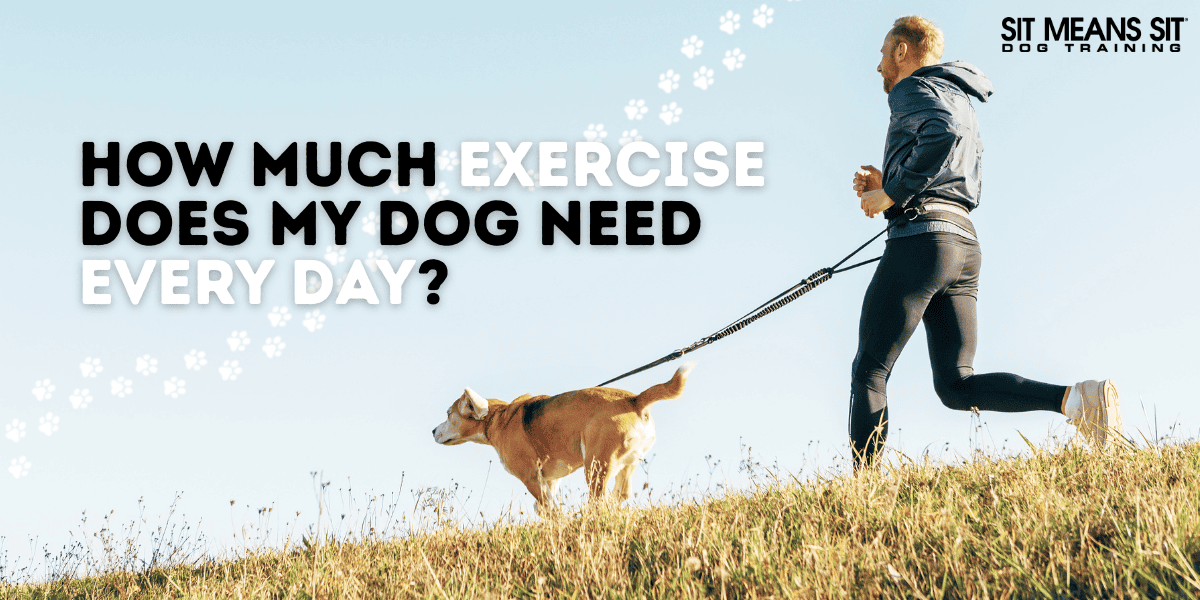As summer winds down, and fall creeps closer. You and your pup might be taking advantage of the cooling temperatures and scenic views. Did you know that this outside time can be highly beneficial for your pup? Spending active time together doesn’t just reinforce your bond; it also strengthens your pup! Exercise is an essential aspect of all of our lives, including our furry friends. Without daily, intentional movement, you and your pooch could suffer from a variety of health risks.
Today, we’ll take a look at just how much exercise is right for your dog, and give you a few ideas on how to complete your daily goals with fun and safety in mind. Exercise is a necessary part of living a happy, healthy, and full life; no matter how many legs you have! Let’s dive right in and find an activity that’s pawfect for you both.
Why is Exercise Important for Dogs?
As pet parents, we do everything we can to help our furbabies live comfortably. When pups struggle with injuries and other health issues, aiding them might not just look like giving them their medication and extra cuddles. Avoiding these risks is possible by helping your dog stay active, despite their age. It’s important to remember that not all exercises are created equal. Your dog can enjoy a plethora of benefits when they participate in activities that are right for them!
Benefits of Daily Exercise for Fido
- Lowers risk of obesity
- Keeps muscles and joints strong and mobile
- Regulates digestion
- Strengthens urinary tract health
- Promotes hydration
- Improves sleep habits and patterns
- Supports mental health
- Strengthens the pet and human bond
The biggest argument for daily dog exercise (beyond supporting their health) is tiring them out. A dog who has too much time on their paws can get into worlds of trouble, especially without proper behavioral training. Keep your pup happy, healthy, and out of trouble while spending quality time together.
Factors Determining How Much Exercise Fido Needs
Age, breed, size, and energy levels of your furry friends all determine how much exercise is right for your dog. While these four characteristics are essential, age and breed seem to be the most significant determining factors when it comes to the amount of exercise necessary for a healthy dog. Remember, every pooch is different. Just because one of your furbabies enjoys an activity doesn’t mean they all will. Remember to have patience and consider your pup’s comfort while trying a new activity.
Age and Size
As your dog grows and changes, so will their activity level. Exercise lengths and types should be determined based on aspects such as their age and breed. Certain exercise types are better for specific pups, but have no fear! Let us break down exactly what your pooch needs.
Puppies: Young dogs are dully of energy but still immature. Pups need short bursts of exercise throughout the day, with lessons on behavior intermixed to aid your new furbaby in learning the ropes! Exercising your puppy is the perfect way to incorporate training while keeping your dog healthy and tiring them out throughout the day.
Adults: All adult dogs need daily exercise. Intensity of those activities is dependent on other factors, but a good rule of thumb is at least 30 minutes of exercise per day.
Seniors: For our older furballs, exercise is still needed, especially to avoid health issues, but should be less intense. Over-exercising your senior pup can lead to injury.
Small: The smaller the breed of your pup, the less daily exercise they’ll need. Try to set aside at least 20-30 minutes of exercise time for your small dog. Activities perfect for small dogs include short neighborhood walks, playtime indoors and out, tug-of-war, and fetch.
Medium: Medium breeds need more exercise than small dogs, but nothing extreme. Medium-sized breeds are great exercise partners for folks who enjoy exercising but aren’t as into intense physical activity. Encorporate 30-40 minutes of walking, running, fetch, or dog park outings into your schedule.
Large: Large and extra-large dogs need enough exercise to sustain their larger bodies. 40-60 minutes of more intense activities are great fr breeds of this size. Long walks, runs, a nearby hike, or more extended periods of playtime are ideal. It’s also important to consider the health concerns of each pup in your life. Larger dogs are prone to joint issues; be mindful when selecting activities for exercise.
The Most (& Least) Active Dog Breeds to Match Your Lifestyle
Wondering how active your pup is or looking to adopt a dog that’ll fit your lifestyle? Check out the differences between these adorable dog breeds.
 Most Active Dog Breeds VS Least Active Dog Breeds
Most Active Dog Breeds VS Least Active Dog Breeds
- Border Collie 1. Pug
- German Shepherd 2. Shih Tzuh
- Australian Cattle Dog 3. French Bulldog
- Golden Retriever 4. Pomeranian
- Siberian Husky 5. Chow Chow
When exercising with your furry friend, never forget to have fun! Whether you and Fido are training for a marathon or want to incorporate some extra playtime into your schedule, you both won’t regret getting your hearts pumping while spending time together.


